How To Clean, Seal and Polish Granite Countertops
Granite is a popular choice for kitchen counters, as well as floor and wall tiles. It’s harder than marble, and its shiny surface and wide range of colors mean it’s an elegant, timeless addition to any home. Granite even has antibacterial and heat resistant properties too. Unfortunately, granite’s good looks and useful properties do come with a premium price tag. If you want to know the best way to keep your granite countertops looking like new, or you’re considering installing granite counters but are daunted by the maintenance, we’ll show you how to keep your work surfaces effortlessly clean.
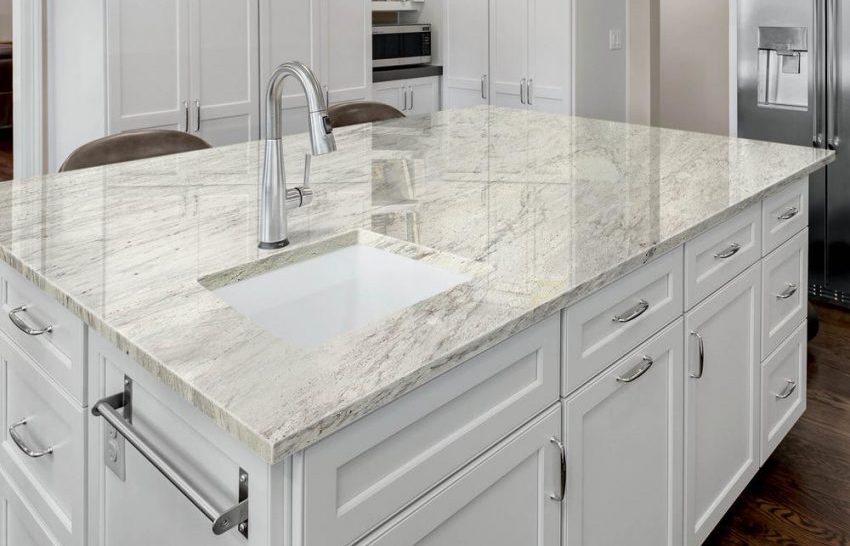
What is granite?
When you buy a granite countertop, what you’re getting is one of a number of different kinds of rock. True granite is igneous, meaning it’s been formed from lava. What’s in your granite will depend on where it was formed, how long it took to cool, and more. That’s why granite comes in a range of colors and crystal sizes: each granite deposit is as unique as the volcano that created it.
The stone in your granite might contain silica, mica, feldspar, or quartz, along with a variety of other minerals. Or it might not be granite, or even igneous rock, at all. Metamorphic Dolomites are sometimes sold as granite, as are sedimentary breccias and gabbros.
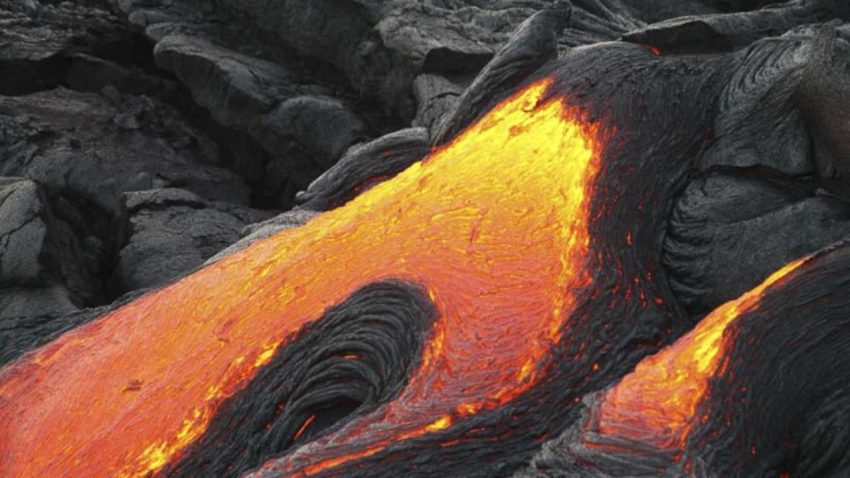
For most people, the chemical makeup of their granite is less important than how it looks, but these variations do have an effect on how you clean your granite countertop. Some types of granite are harder than others, while some stain more easily. Knowing what will stain your particular work surface, and what cleaners you can and can’t use on it, is a good first step to maintaining it properly.
Pro Tip: It’s a myth that dark granite is harder than light granite. Because the minerals in granite are so variable, you can’t tell how strong or porous granite is from the color.
If you haven’t chosen your granite countertop yet, or you know the store your installed granite came from, you can probably get a sample piece in order to stain test. If you can’t get a sample, don’t despair. Our pro tips will guide you through safely cleaning and maintaining your granite.
The lemon and water test for granite countertops
You’ll Need:
- A sample of your granite counter
- Water
- Real lemon juice
- Optional: cooking oil, coffee, sliced fruit e.g. strawberries, blueberries
- Decorator’s tape
- Granite sealant
- Optional: magnifying glass
The lemon and water test is a great, simple way of finding out how your granite countertop will react to different stains and cleaning solutions. You’ll need a sample of your granite from the stone yard or store it came from in order to do this. Don’t experiment on your installed worktop.
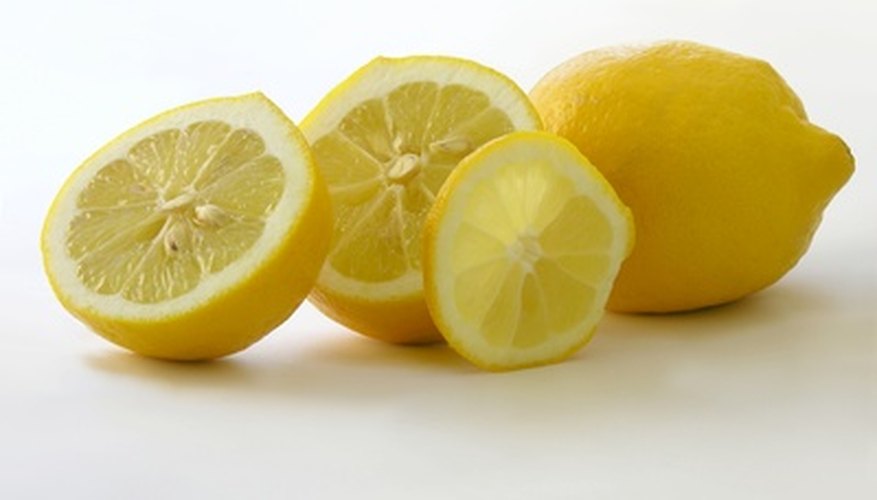
Step one: Use decorator’s tape to divide your test granite in half, and seal one half using the brand of sealant you plan to use on your countertop. Check out the guide at the bottom of this article for how to seal granite, or follow the manufacturer’s instructions.
Step two: Once your sealant has set, put your granite on a level surface and add a small amount of water on each side. Next add a small amount of (real) lemon juice beside the water, taking care not to mix them together. For a final test, you can also add cooking oil, or stain sources such as coffee or cut fruit.
Step three: Allow the test granite to sit for at least an hour.
Step four: Wipe the granite clean and inspect it for stains and marks. You should view it at different angles and under different light sources to be sure you see everything. For the most detail, use a magnifying glass to examine the surface for any tiny abrasions or dulling, known as etching.
What you’re looking for:
Where the water (and oil, if used) was placed on the granite, check for darkening of the stone. This indicates that the granite has absorbed the liquid, meaning it’s porous. Whenever you get porous granite countertops wet, you run the risk of them becoming discolored.
The side of the granite that was sealed shouldn’t show any water damage, even if the unsealed side does. If the granite darkens despite being sealed, it’s highly porous and you’ll need a specialized sealant to protect your work surfaces. Maintenance on porous granite is also more intensive, because you’ll have to seal it more frequently and mop up any spills as soon as they happen.
No discoloration where the water was left on the granite means it’s non-porous and will be less likely to stain.
In the area where you put the lemon juice, you might see a change in the shine or surface texture of the granite. Try rubbing your fingers over the spot if you don’t see anything, just to be sure. If your granite looks dull, it has been etched by the acid in the lemon juice.
Some types of granite etch very easily, while others hardly react to even strong acids. If you notice signs of etching, that means your granite worktop will need to be protected from acids such as lemon juice, tomatoes, and red wine.
The primary purpose of sealant is to make granite less absorbent, not to stop chemical damage. Therefore a sealant won’t completely protect your granite from etching, but it should reduce the effect.
Finally, check how susceptible to staining your granite is by reviewing where you placed other test samples. Lighter granites tend to stain more easily, but if your light granite is non-porous then staining will be less of a concern.
How to clean a granite countertop
For most day-to-day cleaning, you don’t need to use a lot of complicated or specialized chemicals on your granite counter. Wipe up spills as soon as you can, and avoid placing any stain sources onto the granite.
Although water can discolor granite and leave marks behind, washing your granite with water is still the best way to clean it. The key is to use only as much water as necessary (don’t flood the stone) and make sure to wipe and dry your granite countertops as soon as you’re done cleaning. Water will only affect your granite if it remains on the surface long enough to soak in.
Always try to use a pH neutral cleaner on granite surfaces to avoid the risk of etching. Gentle dish soap and water is usually enough. Acidic or alkali cleaners can both damage the surface of your granite, making it look dull and dark.
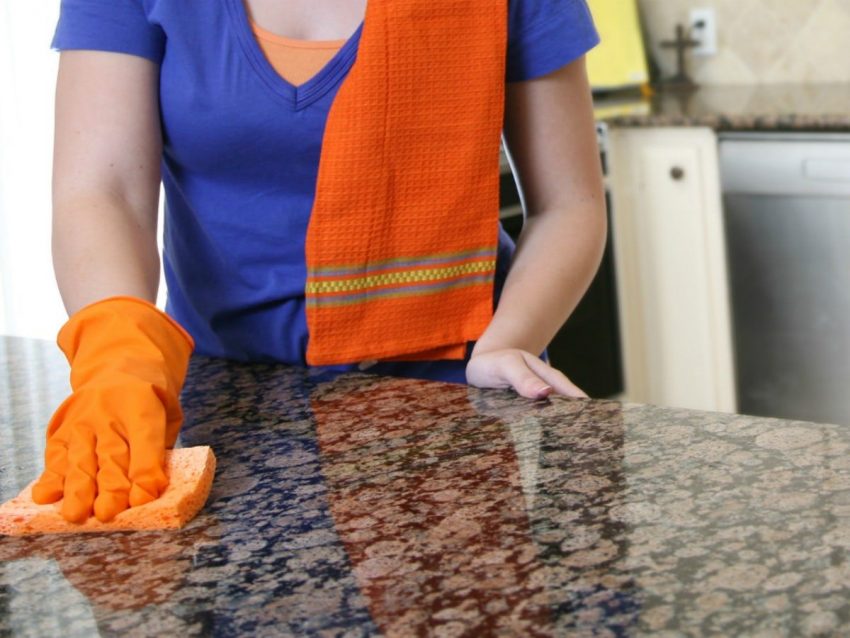
What not to use to clean granite counters
- Lemon juice
- Vinegar
- Citric acid
- Ammonia
- Bleach
- Windex
- Lysol
What you should use to clean granite countertops
- Dish soap (e.g. Ivory, Dawn)
- Castile soap
- Warm water
- Baking soda
- Isopropyl alcohol
| Can I use these to clean my granite countertop? | |
| YES | NO |
| Dish soap (e.g. Ivory, Dawn) | Lemon juice |
| Water | Vinegar |
| Baking soda | Citric acid |
| Isopropyl alcohol | Ammonia |
| Bleach | |
| Windex | |
| Lysol | |
To clean granite counters, first wipe away any dust or spills with a clean, damp microfiber cloth. Then use warm water with a small amount of dish soap to wash granite surfaces down. Wring out the cloth and wipe again with clean water to remove any soap residue, as over time it can leave a film behind, especially on dark granite.
Pro Tip: Make sure your dish soap doesn’t contain any citrus extracts or essential oils. Even though they’re only used in very small amounts, they can still damage granite worktops.
Never use any abrasive pad on granite or other natural stone surfaces. Wire cleaners, brushes, and even sponges can scratch and scuff the surface. Instead, microfiber cloths are the best tool to use, as they won’t scratch and they collect dust and dirt, rather than moving it around.
If your granite countertop has a sticky stain, avoid the temptation to scrub it away. Instead, soak stains with water or a pH neutral cleaner and use a soft cloth to wipe them away. If you have a larger stain such as dried food to remove, you can carefully use a plastic scraper to dislodge the residue.
Once your counter is clean, it’s important to dry it completely using a fresh microfiber cloth. If you leave water on granite countertops you risk discoloring the stone.
That’s it! Keeping your granite counters clean really isn’t too difficult, and doesn’t require any expensive, specialist cleaners.
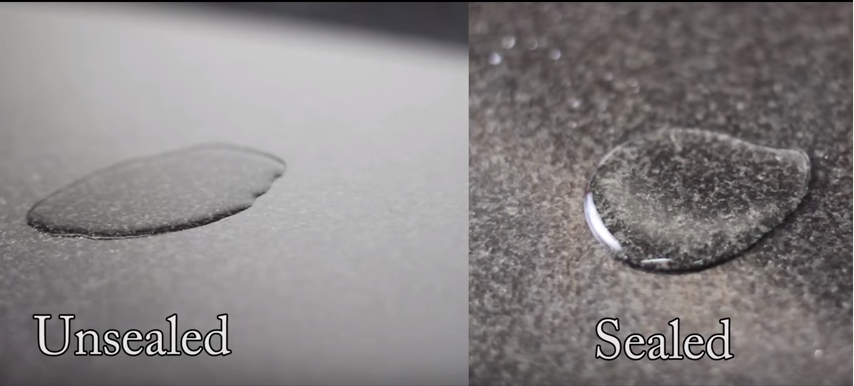
How to remove dried spills from granite counters
Despite your best efforts, you’ll probably miss a spill at some point. Don’t worry, it doesn’t mean your beautiful granite surface is ruined forever.
Avoid the temptation to use strong cleaners like bleach or ammonia, or DIY cleaners such as white vinegar or lemon juice. All of these are too abrasive for use on natural stone without risking damage. Although one or two uses of these solutions might not look like they’ve done any harm, over time they’ll slowly erode the granite surface, leaving it dull, changing its color, and making it more likely to absorb stains in the future.
Instead, make a solution of 50/50 isopropyl alcohol and water. Spray the spill and work it out gently with a microfiber cloth. If the residue still doesn’t lift, dampen a paper towel with the isopropyl alcohol solution and press it over the mark. Let it sit for five to ten minutes and then wipe clean.
If all else fails, make a paste of baking soda and water and apply it to the spill. Use a microfiber cloth to gently rub the residue, then wipe clean using warm, soapy water. This method is particularly effective at removing oily marks from granite.
Be sure to wash the counter with fresh water and dry thoroughly once the residue has been removed. This will keep your granite in top condition.
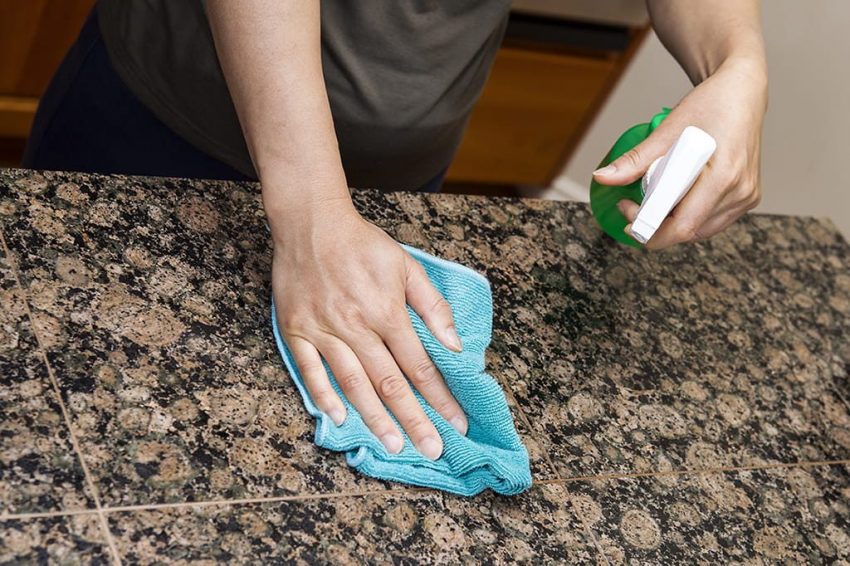
How to remove stains from granite counters
If your granite countertop is stained, in most instances it can still be fixed. The cause of the stain will determine the best way to clean it.
Water marks
Most water marks will disappear once they’ve completely evaporated, but if your granite is very porous, or the spill was large, you might end up with a dark, discoloured area. To remove water spots, use warm, soapy water to gently wash the stain. Rinse away any soap residue with a clean, damp cloth, and then dry thoroughly.
If the stain is still there once the worktop is dry, try using a paste of baking soda and a small amount of water. For the most stubborn water marks, you can use fine steel wool (#0000) to gently buff out the mark. Never wet steel wool when you’re using it on granite, as it will damage the surface.
Oil-based stains
The best solution for oily stains is to use a paste of baking soda and water. Apply the paste to the stain, work it in gently using a soft cloth, and leave for up to an hour. Remove any residue with a damp cloth and dry the area well. You may need to repeat this several times to remove large or deep stains.
Organic stains
Food stains can look very bad, but they can still be cleaned out of granite countertops. Fruit, coffee, soy sauce, and more can all stain granite, but they can be removed with hydrogen peroxide if they don’t respond to other cleaning methods.
| What kind of stain is in my granite countertop? | ||
| WATER | OIL | ORGANIC |
| Hard water | Cooking oil | Strawberries |
| Mineral deposits | Pizza grease | Tomato juice |
| Soap scum | Lipstick | Coffee |
While hydrogen peroxide is slightly acidic and shouldn’t be used regularly on your granite counter, you can use it to sparingly spot-clean stubborn stains. Make a paste from hydrogen peroxide and talcum powder and apply it to the stained area. Rub the stain gently with a soft cloth, and wipe away any residue. Use fresh water to ensure you remove all of the remaining peroxide and protect your granite worktop from further damage.
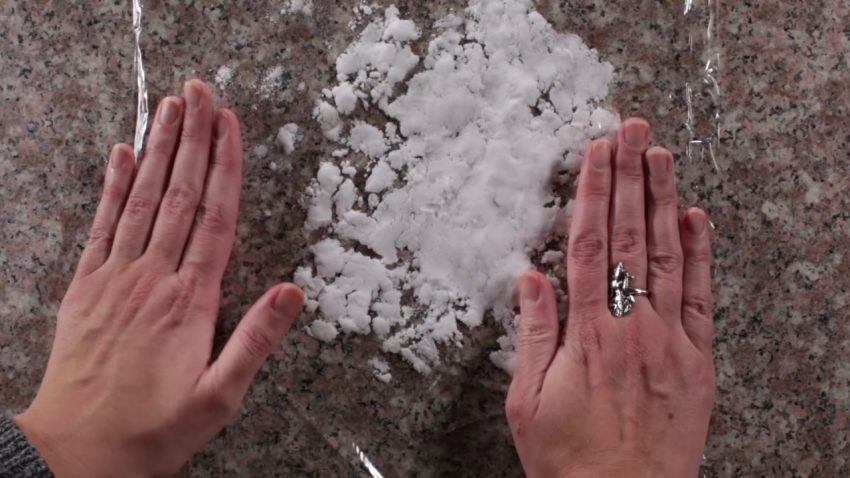
DIY and natural granite cleaners
Unfortunately, most common DIY cleaners aren’t suitable for use on natural stone. Vinegar and lemon juice are acidic, and will damage your granite surfaces. However if you get a stain on your granite countertop, you can treat it with a poultice of baking soda and water. Mix two or three tablespoons of water with enough baking soda to make a thick paste, and apply thinly to the stain. Work the stain out with a soft cloth using circular motions, and clean the area well with fresh water to remove any residue. Finally, dry your granite to prevent water marks from forming.
To disinfect your granite countertop, use a mixture of one part isopropyl alcohol and three parts water. Add a few drops of dish soap, and put the solution into a spray bottle. Mist the granite counter and let it sit for ten minutes before wiping away any excess with a dry microfiber cloth. This will boost your granite’s natural antibacterial properties.
Pro Tip: If you want to add a scent to your cleaning solution, avoid citrus essential oils. Instead use tea tree, eucalyptus, rosemary, or lavender.
As a natural alternative to dish soap, look for products with eco-friendly ingredients. Castile soap is also safe to use on granite. Just substitute a few drops in place of dish soap.
How to polish granite until it shines
The appeal of granite countertops is their high shine finish, and you’ll want to keep them looking sparkling clean. There are a number of ways to shine granite counters. You can buy a specialist granite polish for use on your worktops, or give one of these solutions a try.
Baking soda
Cleaning pros love baking soda. It’s an incredibly versatile, effective, and gentle cleaner for all kinds of surfaces—and it can also polish your granite countertops. Make a mixture of three parts baking soda to one part warm water, and combine until smooth. Apply a thin layer of the paste to your granite surface, and gently buff with a clean cloth. Wipe away any residue with a damp cloth and dry the granite for a smooth, shiny surface.
Cooking oil
Although cooking oil can stain granite, in small amounts it’s also an effective polish. Any typical oil will work, for example vegetable or olive oil. Apply a small amount of oil to a soft, clean cloth, and buff the granite using circular motions. Don’t forget to polish the edges of your counter! Oil will give your granite a nice shine, and also help it repel water.
Sometimes granite looks dull as a result of etching. This is what happens when the granite surface is eroded. Small etches can be polished out using polishing powder (usually tin oxide), but no amount of polishing will undo the damage done by deep etching. Instead, call a professional who can refinish the stone and restore your granite to its former glory.
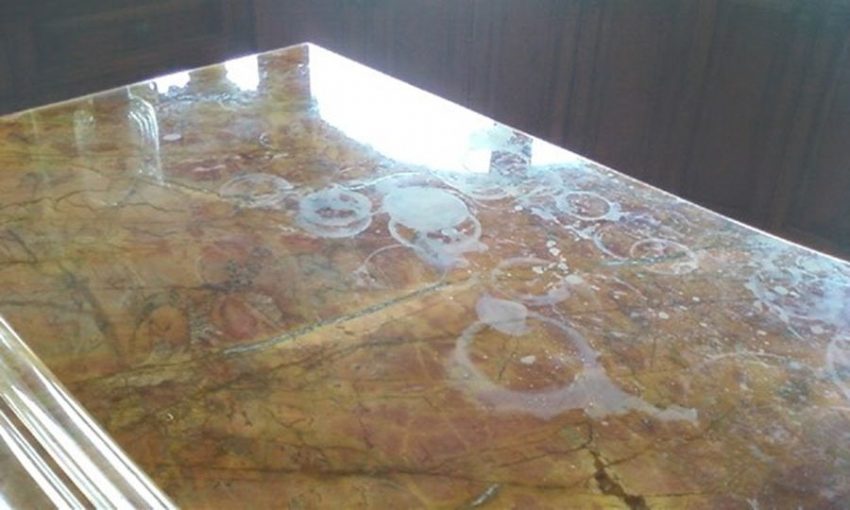
What substances will stain granite countertops?
Although granite worktop owners should try to protect their natural stone surfaces, granite is generally very resistant to stains. While the exact stain resistance of your granite will depend on its porosity and color, you can avoid it becoming stained by taking a few simple precautions.
Water
Water can stain granite if it’s allowed to soak in. Take care to wipe up any spills as soon as possible, and pay particular attention to your counter in wet areas such as around sinks, or where you chop food. Don’t leave damp sponges or cloths on your granite, and remember not to put your wet gloves or umbrella on the kitchen counter when you come home.
Even though water can stain your granite countertops, don’t be afraid to use it regularly for cleaning. Water will only leave stains behind if it’s allowed to soak into the stone, so be sure to always dry your counter thoroughly.
Oils
Oils can discolor granite surfaces, and the stains they leave behind can be harder to remove than water marks. The best way to avoid oily stains is to be vigilant about wiping down your granite counter, especially around cooktops. Some foods also contain oils that can soak into your granite, so try to avoid putting anything organic directly on top of your countertop. Use cutting boards and silicone mats to protect your granite from accidental damage.
Fruit juice, red wine, and soda
These drinks are all acidic, and have strong colors. For granite counters, that’s a bad combination. The acid eats into the surface of granite, and the color permeates the stone, leaving etching and stains behind. Always wipe up these types of spills immediately, and use coasters to protect your countertop from drink rings.
Bleach/ammonia
Any substance that isn’t pH neutral can damage granite, and that includes the most common household cleaners. Unless you’ve tested a sample piece of your granite worktop, avoid using any strong solution as they can cause etching and discoloration.
Heat
You may be surprised to hear that hot pots and pans can damage your granite. After all, its natural heat resistance is one reason why granite is so popular. Granite can still be damaged by heat because the sealants and finishes used on its surface are not heat resistant to the same degree. This can result in ugly black marks on your granite, or—in worst-case scenarios—even cause the granite to crack. Rather than risk heat damage, use protective pads or trivets under your hot pans to protect your granite.
Fresh fruit
Just like fruit juice, fruit itself is usually acidic and brightly colored. Berries, grapes, tomatoes, and citrus fruits are particularly likely to damage granite and leaving stains behind. Protect your worktop by always putting something underneath any food you set out, especially fresh fruit.
Coffee
Coffee is acidic enough to damage the surface of your granite countertop, leaving it dull and etched, and at risk of absorbing stains. Keep coffee grounds away from your counter, use coasters under cups to avoid rings, and consider putting a silicone mat beneath your coffeemaker to avoid any accidental spills.
Makeup
You might not think about the damage that makeup can do to your granite counters, but makeup products contain oils and dyes that can discolor natural stone. Avoid putting any makeup on your worktops, or place something underneath to protect the stone surface.
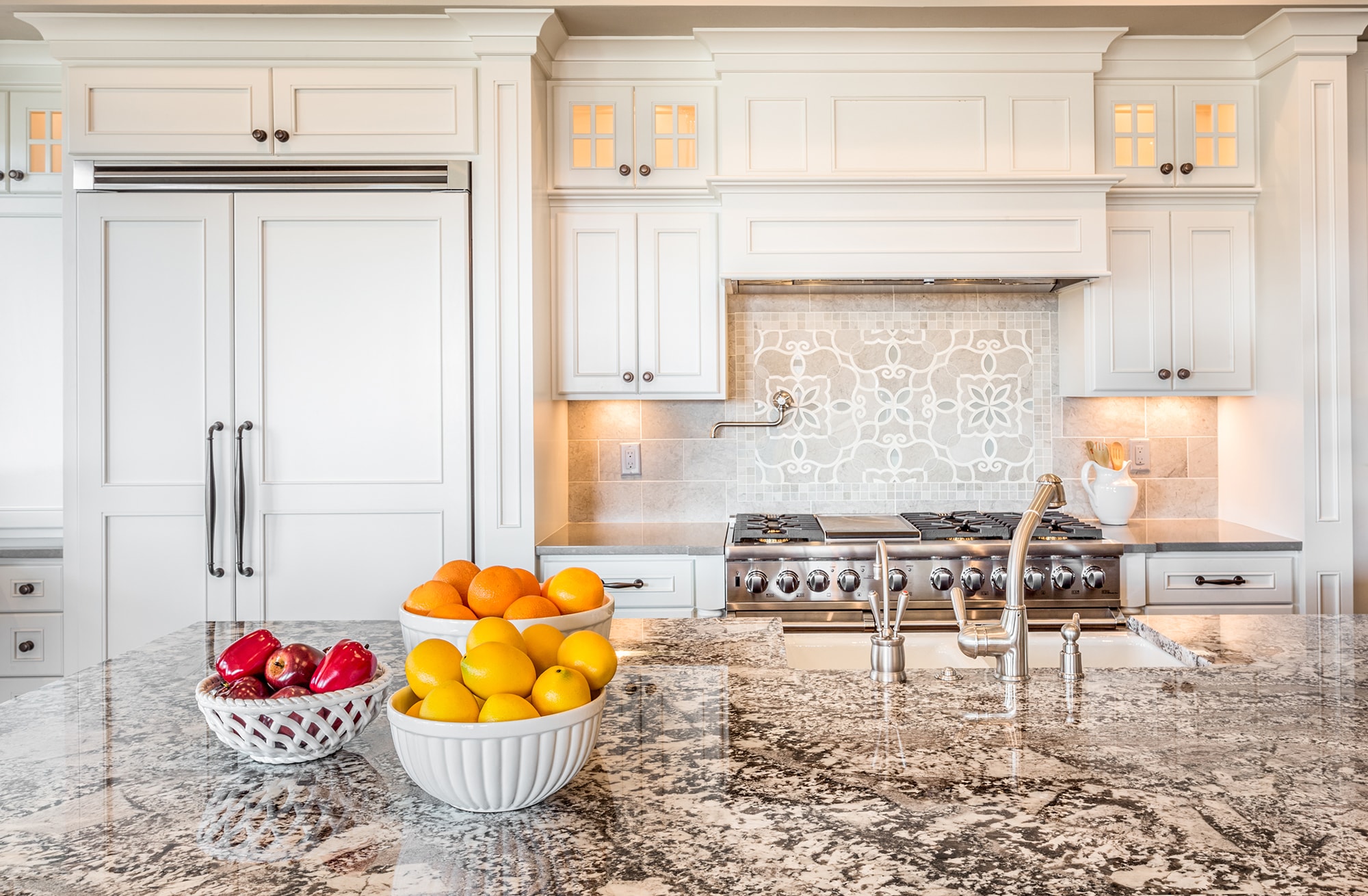
Should granite countertops be sealed?
In short, yes. Sealants protect your granite from absorbing stains, giving you time to clean up before any damage occurs. Unsealed granite is much more likely to be stained or damaged by everyday use.
There are two types of sealant commonly used on granite countertops. Topical sealers coat the granite with a protective layer, while impregnating sealers soak into the stone and fill up the pores that can absorb liquids and stains. Impregnating sealers tend to last longer than topical, but both kinds will need to be reapplied every year or two as they break down.
Color enhancers
Color enhancers are applied like topical sealers, but they don’t provide the same protection. Their purpose is to make the granite look glossy and “wet,” and bring out the natural color of the stone. You can also use a color enhancer to mask damage caused by etching.Additionally, color enhancers can improve the look of certain granite finishes, such as leathered or honed granite, which have a matte, dull finish.
You can use a color enhancer on your granite worktop in tandem with a sealant, but it shouldn’t be considered a replacement to properly sealing the stone.
How to seal a granite counter
You’ll Need:
Dish soap or granite cleaning solution
Warm water
Microfiber cloths
Granite sealant
Note: It’s always best to follow the instructions of the product you’re using, but this guide will teach you the basics of how to seal a granite worktop. You should be able to seal your counters in about an hour, including drying times.
Step one: Clean your granite surface thoroughly with warm, soapy water (or granite cleaner).
Step two: Use a fresh, damp microfiber cloth to remove any excess residue.
Step three: Use a dry cloth to thoroughly dry your countertop.
Step four: Leave the granite to dry to ensure all the water has evaporated. This will take around ten or fifteen minutes.
Step five: Spray sealant evenly across your granite, taking care to cover all surfaces, including the sides.
Step six: Rub in the sealant using a clean, dry microfiber cloth.
Step seven: Leave the sealant to absorb for about ten minutes, then wipe away any excess using a microfiber cloth.
Pro Tip: If you let the sealant set for too long and it dries on your granite countertop, add a little bit more sealant to break it down and then buff it away.

How to tell if granite sealant needs reapplying
Most granite sealants will last about a year, but the exact time you need to reapply your sealant will depend on how you use your kitchen and what your granite comes into contact with on a daily basis. To check if your sealant is still working, take a squirt bottle and spray a little water onto your counter. If you see the water beading, the sealant is still doing its job of keeping liquids out. If the water doesn’t bead, it’s time to reseal. It’s that simple.
How to maintain granite countertops
The best way to keep your granite counters looking their best is to prevent damage from happening. There are five key steps to protecting your granite:
- Don’t place anything hot or organic directly on granite surfaces
- Guard against abrasive dust and grit
- Clean up spills immediately
- Avoid harsh chemicals and cleaners
- Seal your granite regularly
Prevention really is better than cure, so be mindful of how you use your granite surfaces, and what you place on them. Wiping your granite down daily with a damp cloth and buffing away excess moisture will also help you keep your granite gleaming, and give you a chance to notice any spills before they become stains.
With the right treatment, and a little daily attention, your granite counters will last a lifetime, and be the easiest thing in your house to clean. Just follow our pro cleaning tips and enjoy your beautiful granite countertops.